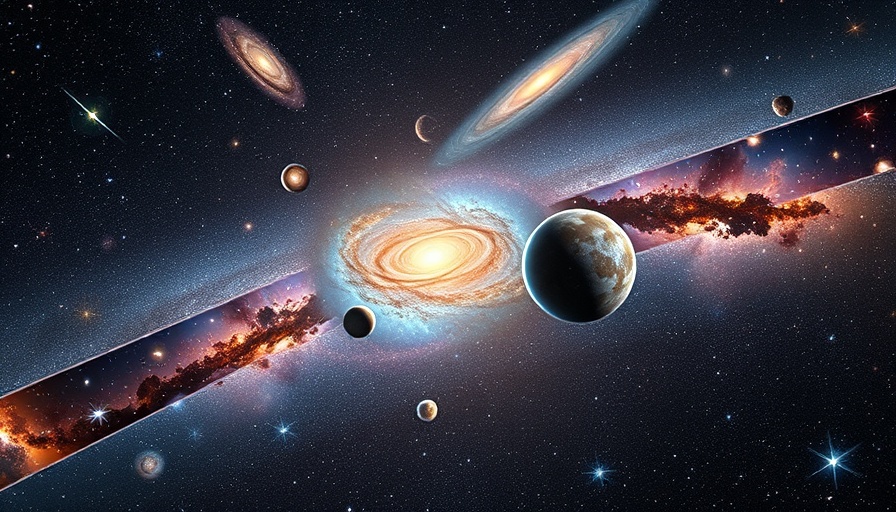
The Hidden Power of the Sun: A Natural Telescope
Imagine turning our sun into a gigantic telescope, one that requires no complex machinery to operate. This concept may sound more like a dream than reality, but thanks to the principles of gravitational lensing as described by Einstein’s theory of general relativity, this idea is very much grounded in science.
Understanding Gravitational Lensing
Einstein's understanding of gravity revealed that it does more than just pull objects towards itself; it also bends the path of light. This effect, first observed during the Eddington expedition in 1919, showed how light from stars was deflected as it passed near the sun during a total solar eclipse. The sun acts as a massive lens, bending light much like a curved piece of glass would. This process is not just theoretical—gravitational lensing is actively used in astronomy today to observe distant galaxies that would otherwise be invisible to us.
The Sun’s Unique Role in Our Solar System
Within our solar system, the sun is undoubtedly the most massive object we have. Its gravitational pull is overwhelmingly strong compared to other celestial bodies, making it the best candidate for acting as a natural telescope. It’s this powerful gravitation that allows it to focus light, enhancing our ability to observe the cosmos. Imagine having a telescope that magnifies distant objects simply by positioning yourself in the right place—this is essentially what the gravitational lensing technique accomplishes.
Applications of Gravitational Lensing in Astronomy
Gravitational lensing has become a crucial tool for astronomers, allowing us to glimpse the early universe and observe some of the first galaxies formed after the Big Bang. By taking advantage of massive galaxy clusters that act as lenses, researchers can study celestial objects that are too distant, small, or faint for standard telescopes. The sun’s potential as a lens could amplify this effect, offering new sights in our exploration of space.
The Future of Space Observation with the Sun
Given our advancements in technology, we are now starting to think creatively about utilizing natural systems such as our sun for astronomical observations. The concept of harnessing the sun's gravitational lensing effect opens new avenues for research in astrophysics, making it possible to explore more distant reaches of the universe.
A Counterpoint: The Limits of Gravitational Lensing
While the sun’s gravitational lensing capabilities are vast, it is essential to understand its limitations. Gravitational lensing only enhances views of what lies behind massive objects, which means that it cannot replace traditional telescopes in all scenarios. Additionally, the alignment of celestial bodies plays a crucial role in lensing effects; without precise positioning, the sun's potential remains largely untapped.
The implications of harnessing the sun’s gravitational lensing effect could revolutionize our understanding of the universe. By using our sun as a massive optical telescope, we can potentially uncover new insights into the formation of galaxies, the behavior of dark matter, and the very nature of light itself.
In conclusion, the sun not only provides light and warmth but also serves as a powerful natural telescope. As our technology evolves, so too may our methods of observation, allowing us to peer deeper into space than ever before.
 Add Row
Add Row  Add
Add 




Write A Comment